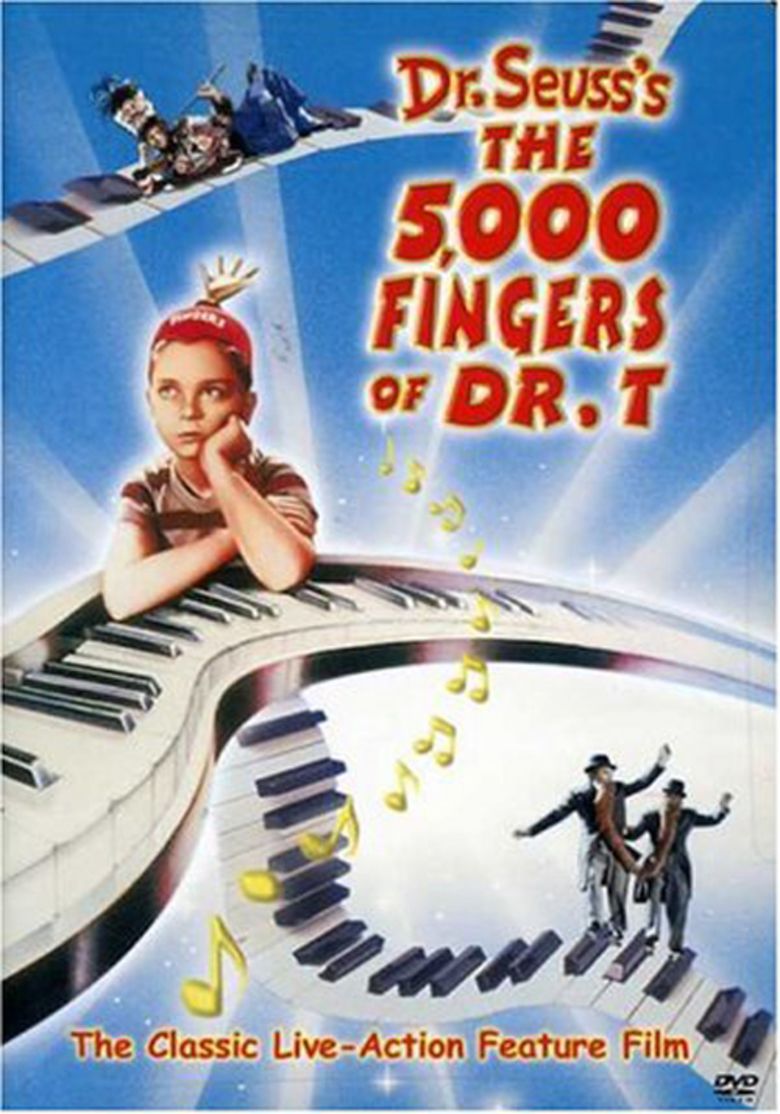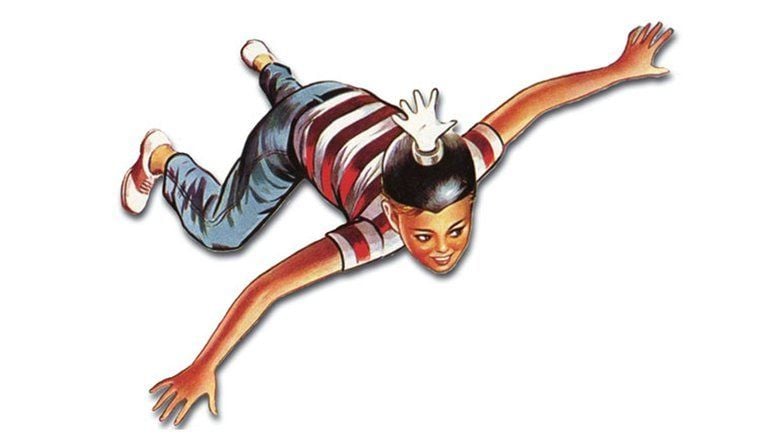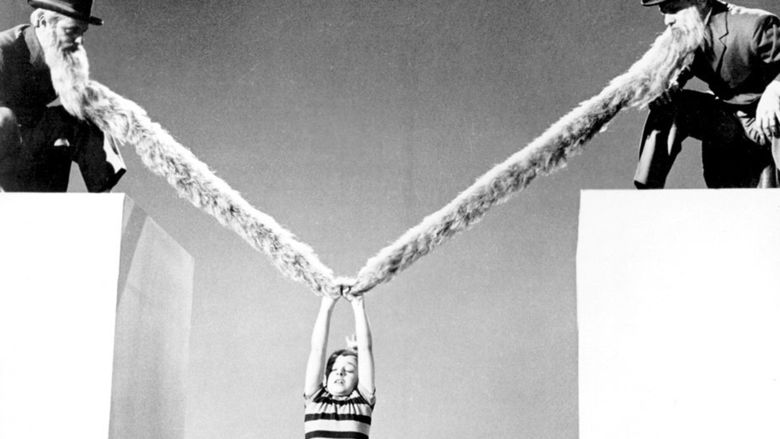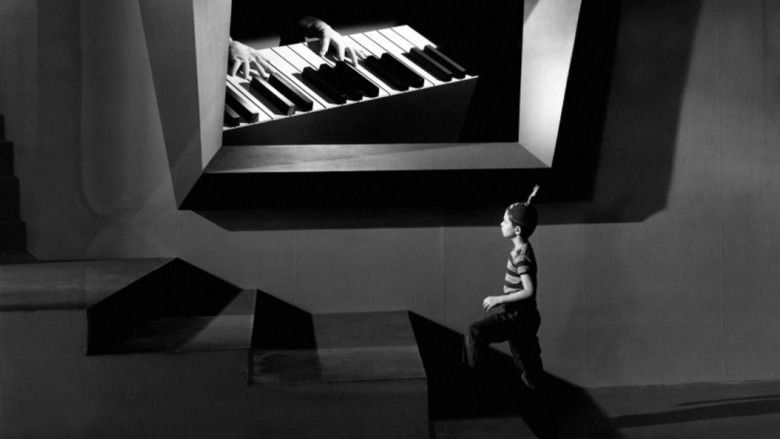The 5,000 Fingers of Dr T
7.4 /10 1 Votes
79% Rotten Tomatoes Genre Family, Fantasy, Music Country United States | 7/10 IMDb Director Roy Rowland Duration Language English | |||||||||||||||||||||||||||||||||
 | ||||||||||||||||||||||||||||||||||
Release date July 1, 1953 Writer Dr. Seuss (screenplay), Allan Scott (screenplay), Dr. Seuss (story) Initial release June 19, 1953 (New York City) Cast Peter Lind Hayes (August Zabladowski), Mary Healy (Heloise Collins), Hans Conried (Dr. Terwilliker), Tommy Rettig (Bartholomew Collins), Tony Butala (Boy Pianist (uncredited)), Noel Cravat (Sgt. Lunk)Similar movies Halloween is Grinch Night , The Cat in the Hat , The Lorax , Horton Hatches the Egg Tagline The Wonder Musical of the Future! | ||||||||||||||||||||||||||||||||||
Joe dante on the 5 000 fingers of dr t
The 5,000 Fingers of Dr. T (1953) is a musical fantasy film, the only feature film written by Theodor Seuss Geisel (Dr. Seuss), who was responsible for the story, screenplay and lyrics. It was directed by Roy Rowland, with many takes directed, uncredited, by producer Stanley Kramer.
Contents
- Joe dante on the 5 000 fingers of dr t
- Plot
- Production
- Musical score
- Musical numbers
- Reception
- 21st century
- Home media
- Soundtrack
- References

Plot

Young Bart Collins (Tommy Rettig) lives with his widowed mother Heloise (Mary Healy). The bane of Bart's existence are the hated piano lessons he endures under the tutelage of the autocratic Dr. Terwilliker (Hans Conried). Bart feels that his mother has fallen under Terwilliker's influence, and gripes to plumber August Zabladowski (Peter Lind Hayes), without result. While hammering at his lessons, Bart dozes off and enters a musical dream.

In the dream, Bart is trapped at the surreal Terwilliker Institute, where the piano teacher is a madman dictator who has imprisoned non-piano-playing musicians. He built a piano so large that it requires Bart and 499 other boys (hence, 5,000 fingers) to play it. Bart's mother has become Terwilliker's hypnotized assistant and bride-to-be, and Bart must dodge the Institute's guards as he scrambles to save his mother and himself. He tries to recruit Mr. Zabladowski, who was hired to install the Institute's lavatories ahead of a vital inspection, but only after skepticism and foot-dragging is the plumber convinced to help. The two construct a noise-sucking contraption which ruins the mega-piano's opening concert. The enslaved boys run riot, and the "atomic" noise-sucker explodes in spectacular fashion, bringing Bart out from his dream.

The movie ends on a hopeful note for Bart, when Mr. Zabladowski notices Heloise and offers to drive her to town in his jeep. Bart escapes from the piano and runs off to play.
Production
In the wake of the success of Gerald McBoing-Boing, Geisel submitted a live-action storyline for The 5,000 Fingers of Dr. T in 1951. Geisel followed it up with a 1200-page script, with "themes of world dominance and oppression coming out of World War II." Geisel relocated from La Jolla, California, to Los Angeles during filming to "enable him to be more involved in the production." His influence on set design and choreography is also evident in the film.
Hans Conried was enthusiastic about the role, saying in retrospect, "I had never had any such part before, never have since and probably never will again. We rehearsed for eight weeks before I was engaged to shoot for eight weeks, an extravagance that I as a bit player had never known ... If it had been a success, with my prominent part in the title role, it would have changed my life."
Prior to release, a "preview version" was received poorly by a test audience. This prompted heavy cuts from the studio and a week of reshoots included a new opening scene. Of the original 24 musical numbers filmed in their entirety, 11 were removed. The removed songs still survive with the complete musical soundtrack. The "preview version" featuring the removed footage is considered lost. Columbia Pictures released the film a second time in 1958, under the title Crazy Music.
Musical score
The score was composed by Frederick Hollander with lyrics by Dr. Seuss. It earned a 1953 Academy Award nomination for "Best Scoring of a Musical Picture".
The singing voice of Tommy Rettig was dubbed by Tony Butala, the founder of The Lettermen.
Musical numbers
- Opening Credits / Butterfly Ballet — Dream Sequence
- Ten Happy Fingers
- Piano Concerto (Ten Happy Fingers variation)
- Dream Stuff
- Hypnotic Duel
- Get Together Weather
- Because We're Kids
- Dungeon Ballet
- We Are Victorious
- Elevator Song
- Dressing Song / Do-Mi-Do Duds
- End Credits
Reception
At the Hollywood premiere, patrons walked out after 15 minutes, and box-office receipts were disappointing. At the time it was released, the film received negative reviews from critics. Bosley Crowther called the film "strange and confused" and said:
this [film] is not only abstruse in its symbols and in its vast elaboration of reveries but [is] also dismally lacking in the humor or the enchantment such an item should contain.
Geisel regarded the film as a "debaculous fiasco" and omitted mention of it in his official biography. The film may have fared better over the years; as of 2017-02-06, it has a 79% positive Rotten Tomatoes rating.
21st century
The home media releases of the film have spawned many new reviews. In 2001, Glenn Erickson wrote that the film was "another flop that has since gained the reputation of an artsy classic - a real cult film. It's colorful, energetic, and indeed can boast fine work by a cadre of talented Hollywoodians. But it's not very good." Later critics were more enthusiastic. In 2002, Peter Bradshaw said the film "has charm, a riotous imagination, and some very weird dream-like sets by production designer Rudolph Sternad and art director Cary Odell"; it's "surreal, disturbing, strong meat for young stomachs." In 2005, Violet Glaze of the Baltimore City Paper called the film "refreshingly tart and defiant for a children's film, its space-age-by-way-of-Caligari world parks right on the delicious side of creepy. Bring the kids, especially the smart ones." In 2008, Dennis Schwartz wrote that it was "probably the best children's fantasy film ever made by Hollywood—even if it's rambling."
Home media
The film was released as a region 1 Blu-Ray DVD in 2016.
Soundtrack
The music that was composed for the film, including material that was not used in the extant copies of the film itself, was released as a set of 3 CDs in 2010. In 2007, a soundtrack CD (ACMEM126CD) was released by Él Records in association with Cherry Red Records.
References
The 5,000 Fingers of Dr. T WikipediaThe 5,000 Fingers of Dr. T IMDbThe 5,000 Fingers of Dr. T Rotten TomatoesThe 5,000 Fingers of Dr T themoviedb.org
